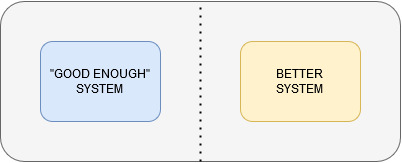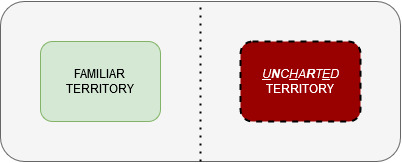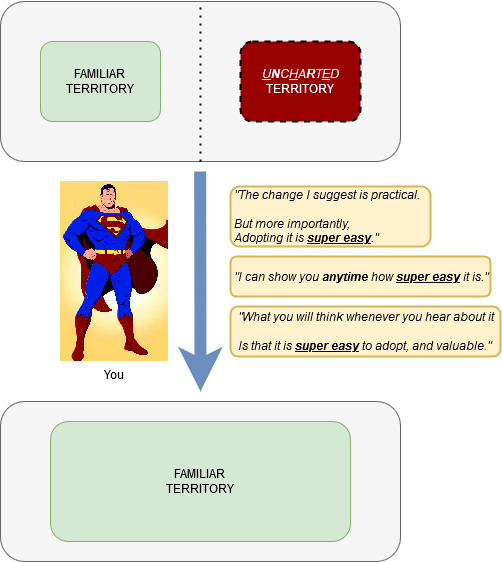15 November 2020 - Bringing improvements to the Workplace
You watched a really good conference - read a really nice book. It addresses a whole bunch of issues you are witnessing at your workplace. What can you do from that?
Hi!
“Better” is the enemy of “Good”.
— Voltaire
At the workplace, as a developer in a project that is several years old already, maybe you are wanting to start…
- integrating automated testing
- introducing machine-learning technology to help with an aspect of the project
- improving the overall architecture of the project
- adopting a one-day-long sprint duration
A few ideas that you might have
“My idea aims at improving things, so it makes sense that my teammates will volunteer to help me set it up!”
“I need to show by example. If I do first, people will follow! … Right?”
“My coworkers are intelligent people ; rational arguments will convince them and we’ll work on it right away.”
I wish things were this simple - unfortunately, they aren’t.
It’s not because you see value somewhere that everyone will see it as well.
But more importantly, even if everyone is convinced of the value in your idea, it’s just not enough to get started on implementing it.
I’ve seen several work environments where literally every single developer said things like:
- “We need automated tests”
- “We need shorter sprints”
- “We need to refactor this module”
Wait a minute - if you all say that, why don’t you just do it?
Fair point. Prioritization. Good answer.
However, I am confident prioritization is not the main issue.
Something isn’t helping prioritizing that kind of thing.
What are we facing?
Our goal is to improve the current system:
Simple enough.
But if it was that simple, what prevents actions from happening?
The real problem
Does this diagram speak to your heart? It has a name: comfort zone.
Everyone knows it personally. It takes energy to address at the individual scale. It takes even more energy to address at the scale of your team or organization.
And this is exactly what bringing improvement is about. Have a team or organization leave their comfort zone.
At the individual scale, all it may cost is forcing oneself to go against one’s own at-the-time desires.
At the scale of your team or organization? Well, it’s harder to force your big boss to leave their comfort zone. Feel free to try though - at your own risks!
What can you do?
Have you ever met someone you would follow to the ends of the earth?
I have.
Does follow to the ends of the earth classify as leave one's comfort zone?
I would tend to say yes.
The word leadership might come to mind. But I am a simple man, I use the word superpower. Here’s the one I’m talking about:
The ability to replace
fear of the unknownwithconfidencethat things will be manageable, or straight down easy.
You can’t force your big boss to leave their comfort zone.
But you can create an atmosphere of Oh! That's quick and easy around the improvement that you want to bring.
Also, note that It's easy! gets much closer to high priority than I have to look....
So making things look easy will reassure people and help them get out of the team’s or company’s comfort zone:
Easy to say.
But is it easy to do?
Of course not.
Though I’ve seen some strategies work in the past…
Making things look easy
The solo way
| Steps | Description |
|---|---|
| 1 | Build skill & expertise one way or another (most of the time, on your free time) |
| 2 | Mention that expertise to your CTO/any project manager in your company |
| 3 | Notify them when that expertise looks adapted to a problem that needs to be adressed |
| 4 | Wait until they find a task for you |
| 5 | Build a prototype/Code your solution |
| 6 | Present your solution in a meeting |
The cultural way
| Steps | Description |
|---|---|
| 1 | Talk about your idea during as many coffee breaks as possible |
| 2 | Create and fuel a community if you find people that are interested in your idea |
| 3 | Let the community grow and radiate its vision throughout the company |
| 4 | Skill & Expertise will build within the community ; awareness will grow inside the company |
| 5 | It’s a question of time before your team prioritizes actions towards your idea |
Important points to consider
- Both strategies feature:
- Building skill & expertise (usually on your free time)
- Efficiently radiating an authoritative aura of know-how throughout the company
- You become the mentor in your organisation after that. Note that it can be frustrating
- Do not expect much help from your coworkers. Keep in mind the 1/9/90 rule:
- Out of 100 people:
- 1 will be a driving force
- 9 will contribute
- 90 will be consumers
- Wikis are good examples of that rule
- Out of 100 people:
Conclusion
Bringing improvements requires fighting against your coworkers’ comfort zones.
Bringing improvements requires the superpower of making things look easy instead of unfamiliar.
It’s hard.
It requires a budget for building skill & expertise.
And it involves a form of loneliness in being the main driving force and not having anyone to look up to in your company.
I want to end this post with a personal note about company culture.
Let’s imagine two companies:
- company A whose managers listen to people with ideas
- company B where a budget dedicated to building skill & expertise is an institution
In my opinion:
- Company A has a culture where improvement is welcomed if it shows up - but it doesn’t
- Company B has a culture where improvement is a core value and fuels a community
This became one of my traditional questions during job interviews: are you company A, or are you company B?




